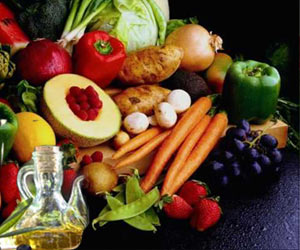-
 play_arrow
play_arrow
Radio Rehoboth
Can Starchy Vegetables Nutrients Be Swapped With Whole Grain Foods?


This perspective study was done by expert Keith Ayoob, EdD, RDN, Associate Professor Emeritus, Albert Einstein College of Medicine and published in
. (
The Dietary Guidelines for Americans currently recommend that most adults consume five to six cups (or cup equivalents) of starchy vegetables each week to help meet their total vegetable goals. Yet, as confusion around “good versus bad carbs” persists among consumers, there is a risk of starchy vegetable avoidance in favor of other carbohydrate foods perceived as equally or more nutritious – or even carbohydrate avoidance altogether.
“It’s tempting to think of all carbohydrate foods as interchangeable,” says Ayoob. “But these foods are categorized within different food groups for a reason – perhaps most importantly, they tend to have vastly different vitamin and mineral contents.”
Advertisement
Compared to grains, starchy vegetables like potatoes tend to be higher in potassium, designated a nutrient of public health concern by the Dietary Guidelines for Americans because inadequate intake is associated with increased health risks. They can also provide an excellent source of vitamin C.
Additionally, though neither group is considered a major protein source, the protein quality in potatoes is notably higher than the protein quality of grains, comparable in quality (as measured by “biological value”) to the protein in egg and milk. And though food choices from both groups can help add fiber to the diet, grains offer unique nutritional benefits as well, typically offering more thiamin, zinc, and vitamin E.
“As is so often the case in the world of nutrition, guidance comes down to balance, variety, and moderation – which might sound boring, but all three would benefit most people’s eating styles,” Ayoob adds. “It’s important to get the right mix of vegetables and grains and include both starchy and non-starchy vegetables to help ensure we’re meeting both our macronutrient and micronutrient needs.”
In addition to demonstrating key differences in the nutrient contributions of starchy vegetables and grain-based foods, the perspective discusses distinctions in each food group’s chemical structure, culinary applications, economic benefits, and cultural relevance.
Ayoob notes, “It’s also important to recognize that some cultural groups traditionally use certain carb-containing foods over others. That’s why more research is needed to understand how different carbohydrate food choices impact diet quality and what culturally appropriate foods should be encouraged to help close any nutrient gaps.”
Starchy Veggies Vs Grain-Based Foods
Dr. Ayoob analyzed two, one-day menu models to assess the nutrient contributions from both starchy vegetables and grain-based foods to the daily diet.
A ~2,000-calorie “foundation” menu was used to reflect the dietary recommendations within the 2020-2025 Dietary Guidelines for Americans and in alignment with the USDA’s “Food Pattern Models.” This menu included both grain-based foods and white potatoes, as a nutritionally representative food from the starchy vegetable category. In this foundational diet, white potatoes were included at breakfast in the form of hashbrowns and at dinner in the form of a baked potato.
A ~2,000-calorie menu with 100% starchy vegetables replaced with grain-based foods was used as a comparison. This menu replaced the hashbrowns at breakfast with an additional slice of whole wheat bread and the baked potato at dinner with white rice.
Limitations of these menu modeling results include the fact that potatoes were the only starchy vegetable incorporated into the foundational menu, and modeling was limited to a single day. Additional modeling reflecting other culturally relevant starchy vegetable options and preparations over a longer period would help to further elucidate the nutritional implications of starchy vegetable avoidance or carbohydrate food-swapping behaviors.
Reference :
- https://www.frontiersin.org/articles/10.3389/fnut.2023.1266308/full – (https://www.frontiersin.org/articles/10.3389/fnut.2023.1266308/full)
Source: Eurekalert
Go to Source:https://www.medindia.net/news/can-starchy-vegetables-nutrients-be-swapped-with-whole-grain-foods-213985-1.htm
Author:
Written by: RSS
Similar posts
Chart
Top popular

News Briefs 10/17/23
Board of Commissioners Workshop & Special Meeting – November 6

Six Sussex road projects considered in latest CTP
Knicks vs. Cavaliers prediction, odds, line, spread, time: 2023 NBA picks, Nov. 1 best bets from proven model
NFL Week 17 highlights: Packers, 49ers, Saints, Steelers win, Cardinals stun Eagles
Copyright 2023 East Sussex Public Broadcasting, Inc.





